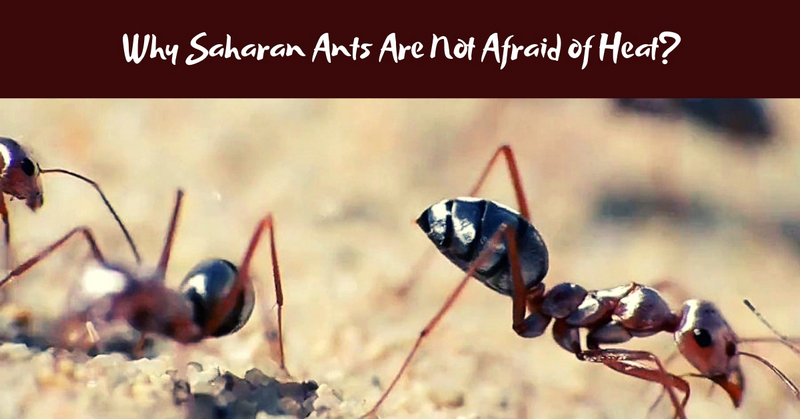
The Saharan silver ant (Cataglyphis bombycina) is one of the most heat-resistant species of living creatures. When the midday sun of the Sahara desert forces the enemies of these ants to sit in the shade, the ants make short forays from their nests in search of food – those who are less resistant to heat and died from overheating become their prey.
Heat-Resistant “Armor” of the Saharan Silver Ant
The study, led by experts from the Free University of Brussels, revealed the secret to the unusual property of insects. It turned out that ants can bear the head because of their scalp, giving iron shine. These hairs, which appeared in the course of evolution, increase the reflecting qualities of their bodies by an order of magnitude, allowing to avoid overheating in the conditions of the greatest hot desert of the planet.
The researchers studied in detail the hairs of silver ants through a scanning electron microscope (SEM) and traced the trajectory of the incident light rays.
“The ability to reflect solar radiation with an average total internal reflection is a new adaptive mechanism of desert animals, which provides effective thermal protection from intense solar radiation”, – a co-author of the study explained.
Note: Internal reflection is the phenomenon of reflection of waves from the interface between two media, provided that the wave emanates from a medium where its propagation velocity is lower.
Full internal reflection is a reflection, in which the incident wave is fully reflected, the value of the reflection coefficient exceeds its largest value for polished surfaces. Along with this, the angle of incidence exceeds a certain critical angle.
So, the Saharan silver ant can spend days in the sun while most of the animals and insects of the Sahara desert go out into open space only at night, in order to avoid daytime temperatures. Being real labourers, they emerge from their own nests during the midday heat and rummage through the corpses of animals killed by heatstroke, besides at a time when the temperature exceeds 50° at the moment.
Scientists have paid particular attention to the optical characteristics of hairs. The remarkable microscope demonstrated their unique structure, which forms a non-specialized reflective property: the triangular cross-section of each hair and the corrugated surface make it look like a prism, reflecting sunlight from the underside. This mirror effect gives ants their bright shine and provides effective thermoregulation, which is necessary in order to withstand the surrounding hot desert.
By limiting their own activity to hot daytime hours, the Saharan ants minimize the possibility of meeting with their main predatory enemy, the lizard, which stops all activities at a time when the temperature becomes unbearable. Arthropods are mostly folded from cylindrical or lamellar hairs. Reflective hairs of this species of ants are considered unique. In addition, these desert ants are distinguished by long legs, lifting their bodies above the warm surface and allowing them to run quickly, which also contributes to cooling through convection.
The team of scientists plans to recreate synthetic hairs in the near future to find out if it is possible to use them for self-cooling surfaces and other necessary applications. In addition, the team plans to study other organisms and animals living in extreme conditions.
Category: General Issues
Tags: ants, biology, insects